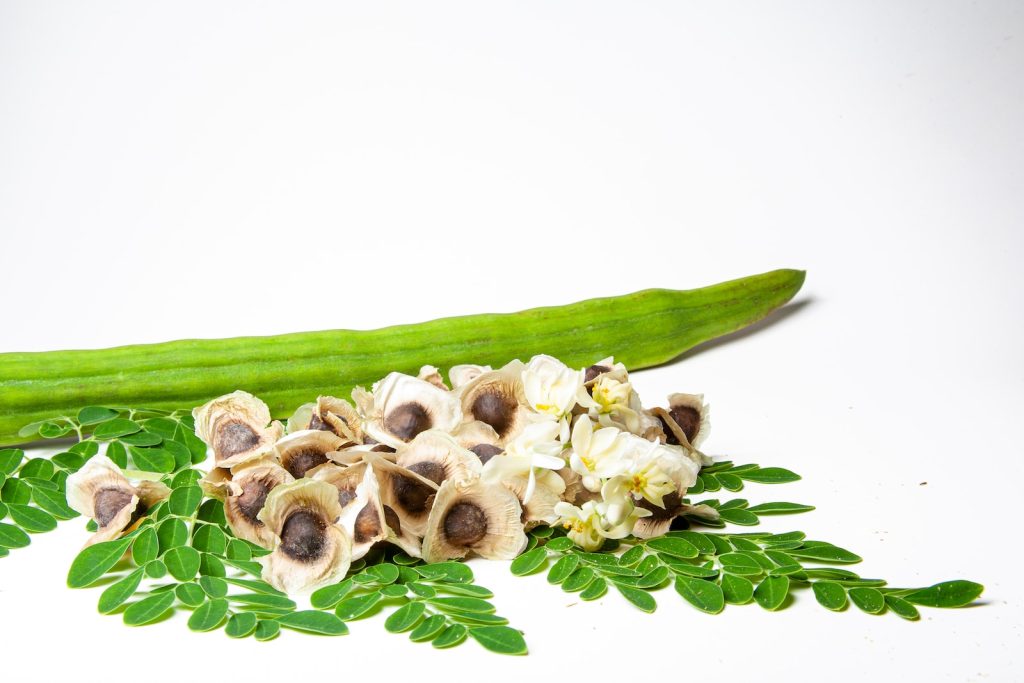Malunggay, scientifically known as Moringa oleifera, is a versatile and highly nutritious plant that has gained popularity for its various uses in food, medicine, and agriculture. It is commonly referred to as the “miracle tree” due to its exceptional nutritional content and wide range of applications. This production guide aims to provide comprehensive information on cultivating, caring for, and harvesting malunggay plants.

Site Selection and Preparation:
Before planting malunggay, consider the following factors for site selection:
- Climate: Malunggay thrives in tropical and subtropical climates with temperatures ranging from 25°C to 35°C (77°F to 95°F). It can tolerate a range of soil types, but well-draining soil is essential.
- Sunlight: Malunggay prefers full sun exposure, receiving at least 6 to 8 hours of sunlight daily.
- Soil: The plant can grow in a variety of soils, but it performs best in well-draining, sandy loam soil with a pH of 6.3 to 7.0. Soil testing can help determine nutrient deficiencies.
- Water: Adequate irrigation is crucial, especially during the establishment phase. Malunggay requires regular watering, but avoid waterlogging the soil.
Propagation:
Malunggay can be propagated using seeds, cuttings, or air-layering.
- Seeds: Soak the seeds in water for 24 hours before planting. Plant the seeds 1 inch deep in prepared soil beds or containers. Germination usually takes 1 to 2 weeks.
- Cuttings: Take 1-2 feet long cuttings from mature trees and plant them directly in the soil. Keep the soil consistently moist until the cuttings establish roots.
- Air-Layering: This method involves inducing roots to grow on a branch while still attached to the parent tree. Once the roots develop, the branch can be separated and planted.
Planting and Spacing:
When planting malunggay, follow these guidelines:
- Spacing: Plant seeds or seedlings at a spacing of 6 to 8 feet apart in rows. This allows ample space for the plants to grow and prevents competition for sunlight and nutrients.
- Planting Depth: Plant seeds 1 inch deep in the soil. For cuttings, plant them deep enough to allow for stable support and proper root establishment.
Care and Maintenance:
To ensure healthy growth and development of malunggay plants, follow these care practices:
- Watering: Maintain consistent soil moisture, especially during the first few months after planting. Reduce water frequency during the rainy season to prevent waterlogged soil.
- Mulching: Apply a layer of organic mulch around the base of the plants to retain moisture, suppress weeds, and improve soil structure.
- Fertilization: Malunggay responds well to organic fertilizers. Apply compost or well-rotted manure annually to enrich the soil. Adjust nutrient levels based on soil test results.
- Pruning: Regular pruning helps shape the plant, remove dead or diseased branches, and encourage new growth. Prune to maintain a central leader for trees and a bushier form for shrubs.
Pest and Disease Management:
Malunggay is generally resistant to pests and diseases, but vigilance is still important:
- Pests: Common pests include aphids, caterpillars, and whiteflies. Use organic insecticides or natural predators to control pest populations.
- Diseases: Watch for symptoms of fungal diseases like powdery mildew and leaf spots. Proper spacing, good air circulation, and avoiding overhead irrigation can help prevent disease outbreaks.
Harvesting:
Malunggay leaves, pods, and seeds are all edible and highly nutritious. Harvesting can begin when the plant is around 6 months old:
- Leaves: Harvest young, tender leaves by snipping them off the branches. Regular harvesting promotes bushier growth.
- Pods: Harvest green pods when they are still young and tender. Mature pods can become tough and fibrous.
- Seeds: Harvest mature seeds from dried pods. The seeds can be used for planting or extracted for oil.
Utilization:
Malunggay is known for its nutritional value and versatile uses:
- Nutrition: Malunggay leaves are rich in vitamins, minerals, and protein. They can be used in salads, soups, and various dishes.
- Powder: Dried malunggay leaves can be ground into a powder and used as a nutritional supplement or added to smoothies and juices.
- Oil: Malunggay seeds contain oil that can be extracted and used for cooking, skin care, and industrial purposes.
- Medicinal Uses: Malunggay has been traditionally used for its potential health benefits, including anti-inflammatory, antioxidant, and immune-boosting properties.
Conclusion:
Cultivating malunggay can be a rewarding endeavor, providing a source of nutritious food, medicinal properties, and sustainable agricultural practices. By following this comprehensive production guide, you can successfully grow and maintain healthy malunggay plants that contribute to your overall well-being and the environment. Remember that local conditions and practices may vary, so adapt the guidelines to suit your specific circumstances for optimal results.




hello, as you are eating regularly, can you share with us, the reason you include it to your diet?
That's the wonder of malunggay and I'm eating it everyday at home.
http://pinoyhorrormovies.com